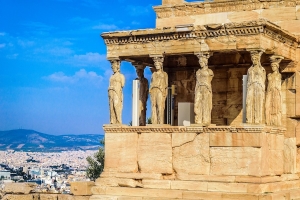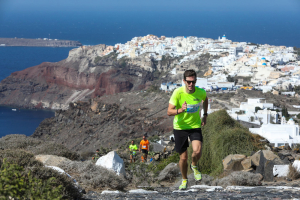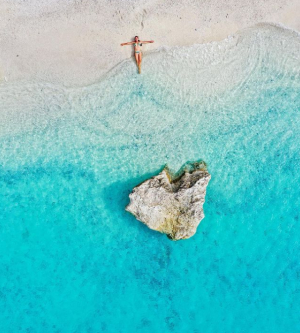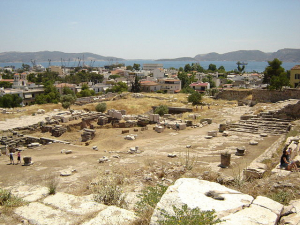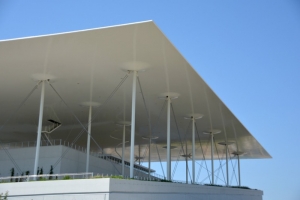BUSINESS CENTRE
XpatAthens
Did You Know? - All About The Ancient Greeks
Run Along The Caldera At The 5th Santorini Experience
Real Madrid in Santorini!
Register now. For more information click here!
Register now here!
Photo by Babis Giritziotis
What A (Greek Summer) Feeling
Photo credit: katerinakatopis
2023 Eleusis European Capital Of Culture Opening Weekend
The opening events will be organized throughout the weekend with a program of exhibitions, concerts, DJ parties and side events across the town of Elefsina.
By becoming the European Capital of Culture, Elefsina is joining an ECoC family of over 70 European cities that have held the title so far.
Originally published on: tornosnews.gr
EESSI: Health & Social Security Coverage Across The EU
- Faster, more efficient claims processing: The electronic exchange eliminates lengthy postal delays, enabling rapid data sharing and timely decision-making.
- Improved data security and accuracy: By operating under a unified security framework, EESSI ensures confidentiality and reduces fraud, such as the use of forged documents.
- Standardization across borders: EESSI harmonizes communication protocols among diverse social security institutions, facilitating smoother cooperation.
- Enhanced support for mobile citizens: EU citizens, pensioners, and workers can move freely across member states, assured that their social security rights will be recognized and efficiently managed.
- Digital transformation: The integration with national systems like e-EFKA advances the digitization goals of social security administrations.
- Approximately 15,000 Social Security Institutions across the EU, EEA countries, Switzerland, and the UK, now interconnected.
- Citizens of EU member states, third-country nationals legally residing in these countries, and their family members.
- Accidents at work and occupational diseases
- Sickness benefits
- Pensions
- Unemployment and family subsidies
- Collection and recovery of insurance debts
- Legislation applicable to social security cases
American Women's Organization of Greece (AWOG)
Founded in 1948, the American Women's Organization of Greece - AWOGreece, is a dynamic English-speaking volunteer women's non-profit group that connects American women in Greece and their friends.
Our vibrant community of women of all ages and backgrounds who share common values and beliefs, focus on charitable and benevolent volunteerism in philanthropy, education and women empowerment. Diverse recreational activities such as monthly meetings and networking events are also organized to help foster a sense of bonding among its members.
AWOGreece is also a member of The Federation of American Women’s Clubs Overseas (FAWCO) founded in 1931. FAWCO is an international network of independent volunteer clubs and associations comprising of 57 member clubs in 28 countries worldwide, including AWOGreece. FAWCO serves as a resource and a voice for its members; seeks to improve the lives of women and girls worldwide, especially in the areas of human rights, health, education and the environment. In addition, FAWCO advocates for the rights of U.S. citizens overseas. The organization is a global women’s NGO and since 1997, FAWCO has held special consultative status with the UN Economic and Social Council.
How to join
Full time AWOGreece: To become a member, simply download and complete the Membership Form/GDPR form. If you are not a U.S. citizen or the spouse of one, you can still join as long as two AWOG members sponsor you. Email the completed forms to info@awogreece.org. Once your membership application is approved, you can submit your annual dues (40,00 Euros) to our AWOG bank account.
Friends of AWOGreece: Those who reside outside of Greece can also support our cause by becoming a “Friends of AWOGreece”. You will not have voting privileges, but you can attend area meetings and participate in group activities in Athens at member prices. Fill out our Membership Form/GDPR and get in touch: info@awogreece.org. Once your membership application is approved, you can submit your annual dues (30,00 Euros) to our AWOG bank account.
When we meet?
Aside from cultural and fun morning and evening outings we arrange throughout the month, we also have two “area” meetings each month. Our Glyfada/south group meets every forth Thursday morning of each month and our Halandri/Agia Paraskevi north group meets every third Thursday morning of each month.
Why join?
AWOGreece is a great group to give back to your local community collectively. Our main charitable cause, is the Heart Pillow Project, a woman-to-woman project where members and friends unite in a common purpose to stuff, stitch and package heart pillows for distribution to mastectomy patients in Athens Hospitals.
AWOGreece is also a great way to connect to the American and ex-pat community in Greece, meet new people and make friendship but most of all, we have fun!
United we will move forward to inspire, support our community and work together as a team with commitment and determination that the organization keeps flourishing for decades to come.
Ancient Olympia - The Birthplace Of The Olympic Games
Olympia was the birthplace of the ancient Olympic Games, which were celebrated every four years by the Greeks. Olympia is situated in a valley in Elis, which is in western Peloponnisos. It was not a town, but a sanctuary with buildings associated with games and the worship of the gods. The site of the sanctuary of Olympia is in a lush region irrigated by two rivers, the Alpheus and the Cladeus. The riverbed remains dry for most of the year now, but in ancient times it was one of Olympiads vital rivers.
Olympia was a national shrine of the Greeks and contained many treasures of Greek art, such as temples, monuments, altars, theaters, statues, and votive offerings of brass and marble. Many valuable objects were discovered, the most important of which was a statue of Hermes, the messenger of the gods by Praxiteles.
The most celebrated temple in Olympia was the Temple of Zeus, dedicated to the father of the gods. In this temple, probably the oldest Doric building known, stood the table of which the garlands were prepared for the victors in the games.
The Archaeological Museum of Olympia, one of the most important museums in Greece, presents the long history of the most celebrated sanctuary of antiquity, the sanctuary of Zeus, father of both gods and men, where the Olympic Games were born. Among the many precious exhibits of the sculpture collection, for which the museum is most famous, the bronze collection, the richest collection of its type in the world, and the large terracottas collection, are especially noteworthy.
In addition to the Archaeological Museum, visitors can go to the Museum of the Ancient Olympic Games, The Folk Museum of Andritsaina, and the actual Archaeological site of Olympia. These museums are well-renowned and great for a family outing.
To read this article in full, please visit: Greek Reporter
Change To ENFIA Dues For Owners
The ENFIA property tax that 565,000 owners have to pay will be reduced compared to the original amount, following the processing of modified property statements (E9) on the Finance Ministry’s Taxisnet online platform. There are 65,000 property owners whose payments will be reduced by at least 300 euros, but they will have to produce documents to justify that.
There also are some 400,000 owners who will see a small rise in their ENFIA dues as a result of the corrections they have made to their official property status.
More than 3.1 million modifications to the E9 forms had been submitted by December 30, with 1.4 million changes concerning taxpayers’ 2014 property status. The other modifications concerned previous years. Owners will be allowed to make more changes to their E9 for previous years, but that will incur a 100-euro fine per form changed.
To read more, please visit ekathimerini.com
By Prokopis Hatzinikolaou
Greek Crisis Prompts A Rethink On Food Waste
To read more, please visit: ekathimerini
Stavros Niarchos Foundation Cultural Center - Arts & More
The Stavros Niarchos Foundation Cultural Center is no doubt an imposing addition to the capital. From a certain angle on the busy Sygrou avenue, the center appears like a massive gleaming silver and glass paneled box was dropped onto the southern Athens skyline.
Such a project could only be possible with a sizeable investment, exactly €596 million. The grant was offered by the Stavros Niarchos Foundation, the largest donation in recent Greek history. It was also one the most generous single donations worldwide in the art and culture realm.
We first walked through the grounds, a man made 170,000 m2 lush, green park complete with performance fields, playgrounds, impressive gardens and an outdoor café. As part of the project, a public athletic park was also built with a track and swimming pool. It is open to the public for use.
The playground also hit the senses. An unsuspecting piece of art made sounds to represent the Greek sea, for example. I stomped on some wooden planks set in the ground that chimed gleefully, so did some unsuspecting metal squares nearby.
The park is now one of the city’s largest green public spaces.
No matter where we stood, there was a view of either the city, including Lycabettus Hill and the Acropolis, or out to the sea.
Thanks to the design of the complex, built on the artificial hill, Kallithea (a quiet residential neighborhood) has bragging rights to one of nicest views in town. Kallithea actually means good view, in Greek. However, a view like this certainly didn’t exist before.
Tips for Visiting the Stavros Niarchos Foundation Cultural Center
- You can’t buy opera tickets just yet. Both the opera and the library are in moving stages and those buildings of the arts complex are set to officially open in 2017.
- You can visit the rest. The beautiful park is great for a stroll and is quite close to the Flisvos Marina, another very scenic and walkable area of southern Athens.
- While at the Stavros Niarchos Foundation Cultural Center, also visit the Agora, an outdoor space that connects the opera and the library. In the Agora lobby, there is an impressive gallery featuring notable Greek artists (most recently Panagiotis Tetsis).
- The Stavros Niarchos Foundation Cultural Center Visitors Center also hosts programming for adults and children.
- Opening hours are from Monday to Sunday from 09:00 till 22:00.
- Admission is free
To read this article in full, please visit: My Greece My Travels
For more information about the Stavros Niarchos Foundation Cultural Center, visit: SNFCC website


